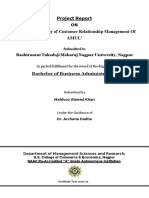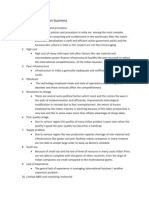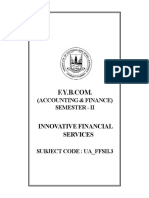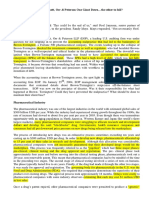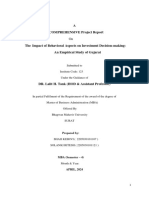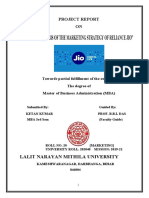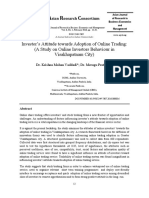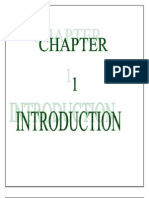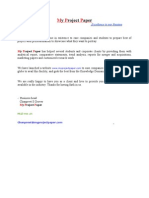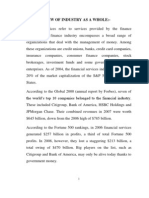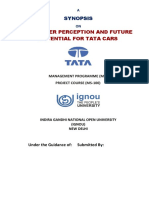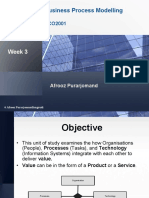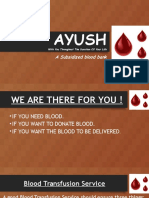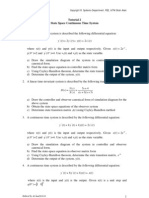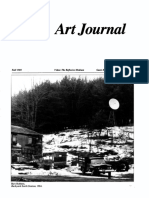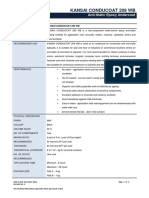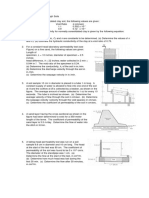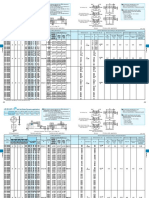UNIVERSITY OF JAMMU
ASSIGNMENT TOPIC:
PROCESS MODELLING AND DIGITAL
CONVERGENCE
SUBMITTED BY :
TEACHER INCHARGE
DINESH BARGOTRA
DR. RACHNA GUPTA
ROLL NO : 12
CLASS : M.B.A.( 1ST SEMESTER )
�UNIVERSITY OF JAMMU
CERTIFICATE
This is to certify that the assignment entitled
Process Modelling and Digital Convergence
has been carried out by Dinesh Bargotra , roll
no. 12 of M.B.A. 1stsemester during the
academic year 2013-14 under the supervision of
Dr.Rachna Gupta .
Dr.
Rachna Gupta
(Assistant Professor)
TABLE OF CONTENTS:
S.NO
.
DESCRIPTION
PAGE
�PROCESS MODELLING
1
Introduction
Definition
Example
Purpose of process modeling
Symbols and notations
Summary
10
DIGITAL CONVERGENCE
7
Introduction
11
Definition
12
Pictorial Representation
13
10
Examples
14
11
Advertising Trends
17
12
Bibliography
18
RPOCESMDLING
I N
I O
Process modeling, often called business process modeling, is the analytical representation
or illustration of an organizations business processes. Business Process Modelling
(BPM) is a modern term and methodology which has evolved through different stages
and names, beginning during the 'division of labour' of the late 1700s, when
manufacturing first moved into factories from cottage industry.
Broadly the term 'business' in Business Process Model/Modelling/modeling is
interchangeable with 'organisation'. Business Process Modelling is not only carried out in
conventional businesses; the methodology is increasingly applicable to all sorts of other
organisations, for example government agencies and departments, charities, mutuals and
cooperatives, etc.
Business Process Modelling is a method for improving organisational efficiency and
quality.The increasing transparency and accountability of all organisations , including
public service and government, together with the modern complexity, penetration and
importance of ITC (information and communications technology), for even very small
organisations nowadays, has tended to heighten demand for process improvement
everywhere. This means that Business Process Modelling is arguably more widely
relevant than say Time and Motion Study or Total Quality Management.
3
�Put simply Business Process Modelling aims to improve business performance by
optimising the efficiency of connecting activities in the provision of a product or service.
2 . D
E F I N
I T I O
A Business Process Model (BPM) is commonly a diagram representing a sequence of
activities. It typically shows events, actions and links or connection points, in the
sequence from end to end.
Sequence is significant and essential to most aspects of business process modelling, but
there are exceptions to this especially at the higher level of organizational operations .
Typically but not necessarily, a Business Process Model includes both IT processes and
people processes.
Business Process Modelling by implication focuses on processes, actions and activities,
etc. Resources feature within BPM in terms of how they are processed. People (teams,
departments, etc) feature in BPM in terms of what they do, to what, and usually when and
for what reasons, especially when different possibilities or options exist, as in a flow
diagram.
Business Process Modelling is cross-functional, usually combining the work and
documentation of more than one department in the organisation.
In more complicated situations, Business Process Modelling may also include activities
of external organisations' processes and systems that feed into the primary process.
4
�An example could be the actions
E X
L E
involved in processing a customer order from an internet-based mail order company.
Starting with a customer placing an order (the customer need)
send IT-based information to the warehouse
stock picking
packing and recording
sending the appropriate IT-based information to the distribution hub
sending IT-based information to the accounts department
generation of an invoice
allocation and organisation of shipment for the vehicle drivers
delivery of the item and invoicing (the customer need fulfilled).
This example of a Business Process Model diagram is based on an online order-throughto-delivery process.It's a flowchart, which makes it very easy to see the process and the
key elements within it.Note that while most Business Process Modelling diagrams
5
�necessarily include a strong sequencing dimension, there are circumstances where
sequence is not so crucial and more of a 'mapping' perspective is appropriate.
�4 . P U R P O S E O F P R O C E SS M O D E L L IN G
A Business Process Model diagram is a tool - a means to an end, not a
performance outcome in its own right.
The final output is improvement in the way that the business process works.
The focus of the improvements is on 'value added' actions that make the
customer service and experience better, and on reducing wasted time and
effort.
There are two main different types of Business Process Models:
the 'as is' or baseline model (the current situation)
and the 'to be' model (the intended new situation)
which are used to analyse, test, implement and improve the process.
The aim of modelling is to illustrate a complete process, enabling managers,
consultants and staff to improve the flow and streamline the process.
The outcomes of a business process modelling project are essentially:
value for the customer, and
8
reduced costs for the company, leading to increased profits.
5 . S Y M
B O
L S
A N
T A T I O
The diagrammatical representation of Business Process Modelling is
commonly 'notation'.
There is no definitive system for Business Process Modelling
notation (note the small 'n'), although efforts persist to standardise
one.
The Business Process Modelling Notation (BPMN) system (note the
upper-case 'N', since this is like a brand name), is an example of an
attempt to establish a standard BPM notation system. The BPMN
system is maintained the OMG consortium (Object Management
Group)
which
comprises
few
hundred
computer-related
corporations).
Organisations may develop their own notation systems or use the
notation of their chosen proprietary software.
9
�Importantly - whatever notation system/software you use - its
symbols must be understood within your own group or organisation.
The example below uses four symbols that are widely understood:
IT-based
activity -
documentation, Decision
point or Gateway -
where
sending or requesting information, for decision has to be made and the flow can
example)
Action - to be carried out by a person in
the organisation.
go more than one way.
Event - an action or IT-based activity from
an external source or carried out by the
customer.
10
Process modelling is about creation a model of the processes to
be managed by an information system.
processes can be viewed as
transformations (input-processing-output)
communications among people (prepare, negotiate, work,
accept).
process modelling can be done with different tools including
project mngmnt. software,
DFD (flows),
Petri Nets (states),
Action Workflow (human relations).
standard process models are under development.
11
�IGDTALCONVER
1
I N
I O
Digital convergence (DC) is the proliferation of information in digitized form
(bits) and the efficient flow of information in the digital network. Digital
convergence is the various ways in which digitized data are processed and
transferred . The Knowledge economy is driven by DC where digital systems
are embedded ubiquitously in the business processes that help the users to
exchange information, store and access data, collaborate, communicate, learn
and trade in real time. The digital information can also be accessed from and
stored in a remote location which supports workers that are mobile and/or
located in distant locations. DC is facilitated by internet, access networks (like
3G,4G, wireless LAN, wireless broadband) and high network connectivity ;
leading a surge in virtualization of computing and storage functions of
digitized data .
Digital Convergence has caused a surge in Cloud Computing; which is where
digitized data, computational platform and infrastructure to compute enabled
by the digital platform is stored in the cloud - outside the walled premises of
the organization on a sharable platform. Digital Convergence is the current
trend in Pervasive Computing which follows the mantra of access to
information anywhere, anytime. Gartner Research states that worldwide cloud
services revenue enabled by digitized data is estimated to exceed $56.3 billion
12
�in 2009, which is a jump of 21.3 percent from the $46.4 billion spent on the
cloud last year. Hence, Digital convergence (DC) is an important paradigm in
information technology.
2 . D
E F I N
I T I O
'The fusion of information and communications technology resulting
in the merging of two or more digital input/output functions into a
single device.'
The term 'convergence' is generally applied to the forces driving the
transition from single function - printers, copiers, fax machines and
scanners - to multifunction devices in the office equipment
environment. These forces include the evolution of document and
knowledge management as well as workflow issues.
In addition, the convergence in the office of monochrome and colour
printing and colour copying should also be considered. Although not
strictly 'Digital Convergence' in the sense intended, it should be given
brief consideration because it will have a major impact on the office
of the future and particularly the cost implications of operating a hard
copy device in that environment.
13
�3 . P IC T O R IA L R E P R E S E N TAT IO N
TV - Smartphone - PC: the right combination
Now your TV can provide access to all information on a single screen. For
example, a LED TV easily connects to a game console, a computer, Blu-ray players
and also Internet router, allowing you to access your mail directly from your living
room!
Now even your Smartphone can be connected to your screen. This is the case of
Apple, with the i-Cloud application that connects TV-PC-Smartphone. You can share
14
�videos, photos and applications wirelessly.
L E
15
�1. Virtualization:
Whereas the historical approach to server infrastructure
tied mutliple functions to multiple hardware devices, a
Virtualized digital environment creates a unified resource
pool that has the flexibility to serve nearly any server
function on singular, consolidated hardware
2. The Smart Phone:
A hardware device that brings together many aspects of
connectivity and sensing to provide a wide variety of
16
�functions to the user. Its very existence acts to further draw in
functionality as its use becomes increasingly fundamental to
our daily lives.
3.The App Platform:
New platforms like the powerful App concept provide a
place for seemingly limitless functionality to converge within
a simplified portal of functionality. The effects of the
connected, mini-application have revolutionized mobile
computing and are opening up new possibilities for commerce
and further convergence of functionality into the future.
4. Expanded Video Conferencing:
17
�By combining industry-standard video conferencing technology with the controlling
power borrowed from the field of building automation, a game-changing, remote
communications platform is the result, that eases the users setup of a video conference,
and allows for far more than the previously standard three participants per location. All of
a sudden the limits of contemporary video conferencing are overstepped by combining
technologies in new way.
18
�Like
5 . A D V E R T IS IN G
T R E N D S
most areas of marketing, advertising is changing rapidly. Some argue that change has
affected advertising more than any other marketing function. For instance, while many
different media outlets are available for communicating with customers, the ability to
distinguish between outlets is becoming more difficult due to the convergence of different
media types. In advertising convergence, and more appropriately digital convergence,
refers to a growing trend for using computer technology to deliver media programming
and information. Convergence allows one media outlet to take advantage of features and
benefits offered through other media outlets. For instance, in many areas around the
world television programming is now delivered digitally via cable, telephone or satellite
hookup. This delivery method uses the same principles of information delivery that is
used to allow someone to connect the Internet.
The convergence of TV and Internet opens many potential opportunities for marketers to
target customers in ways not available with traditional TV advertising. For ex tech. may
allow ads delivered to one household to be different than ads delivered to a neighbors
TV even though both households are watching the same program. But convergence is not
limited to just television. Many media outlets are experiencing convergence as can be
seen with print publications that now have a strong web presence. The future holds even
more convergence opportunities. These include outdoor billboards that alter displays as
cars containing geographic positioning systems (GPS) and other recognizable factors pass
by or direct mail postcards that carry a different message based on data that matches a
19
�households address with television viewing habit
B IB L IO G R A P H Y
Deming, W.E. (1982), Out of the Crisis, Cambridge University Press, Cambridge.
Gilbreth, Frank and Lillian (1924), The Quest of the One Best Way, Purdue
University Frank and Lillian Gilbreth Papers.
Hammer, Michael and Champy, James (1993), Reengineering the Corporation: A
Manifesto for Business Revolution, Harper Business.
Juran, J.M. (1988), Juran on Planning for Quality, Free Press, New York, NY.
Smith, Howard and Fingar, Peter (2003) Business Process Management, The Third
Wave, MK Press.
20
� Taylor, F.W. (1911) The Principles of Scientific Management. Harper & Brothers.
New York and London.
21

